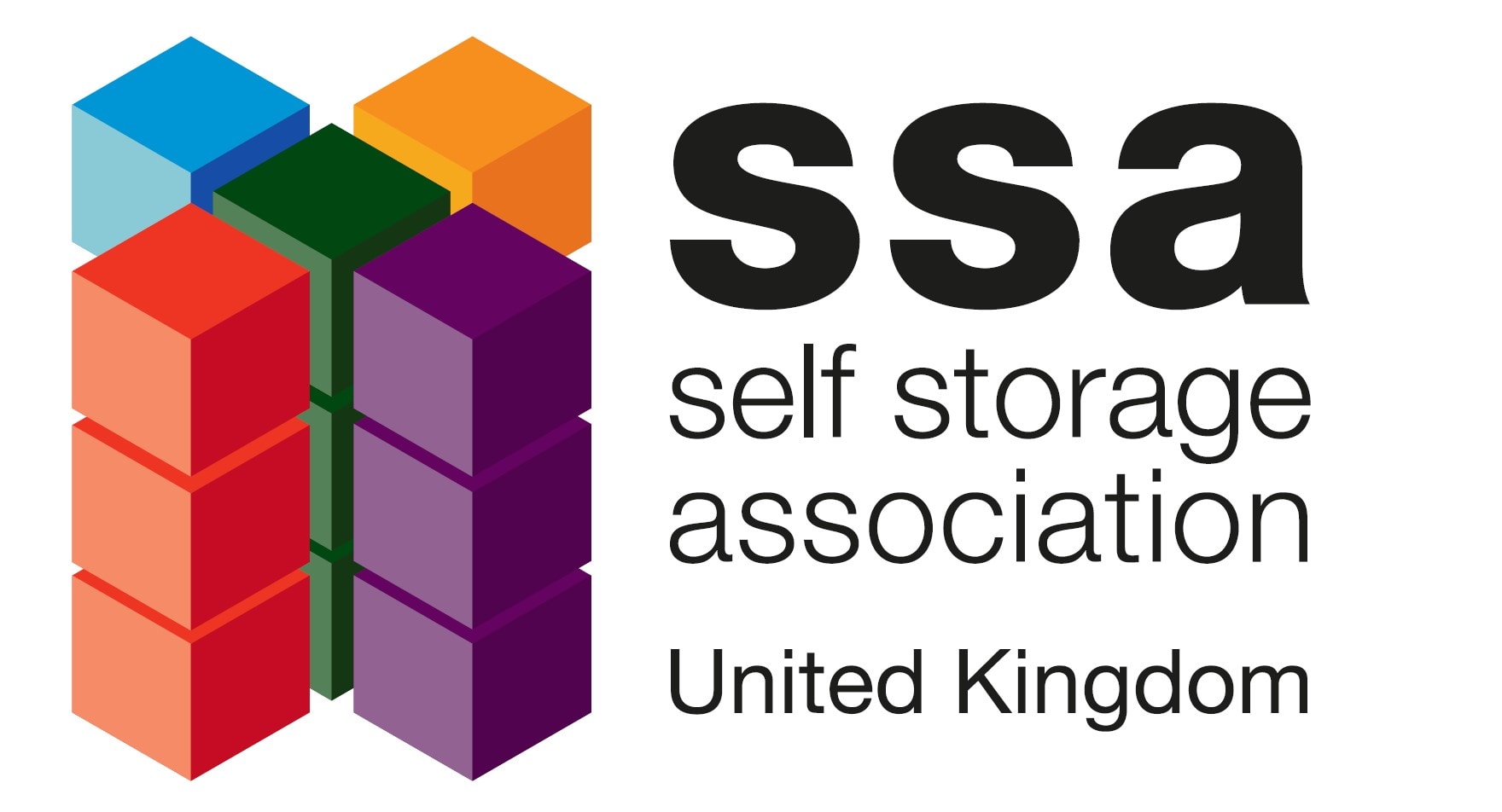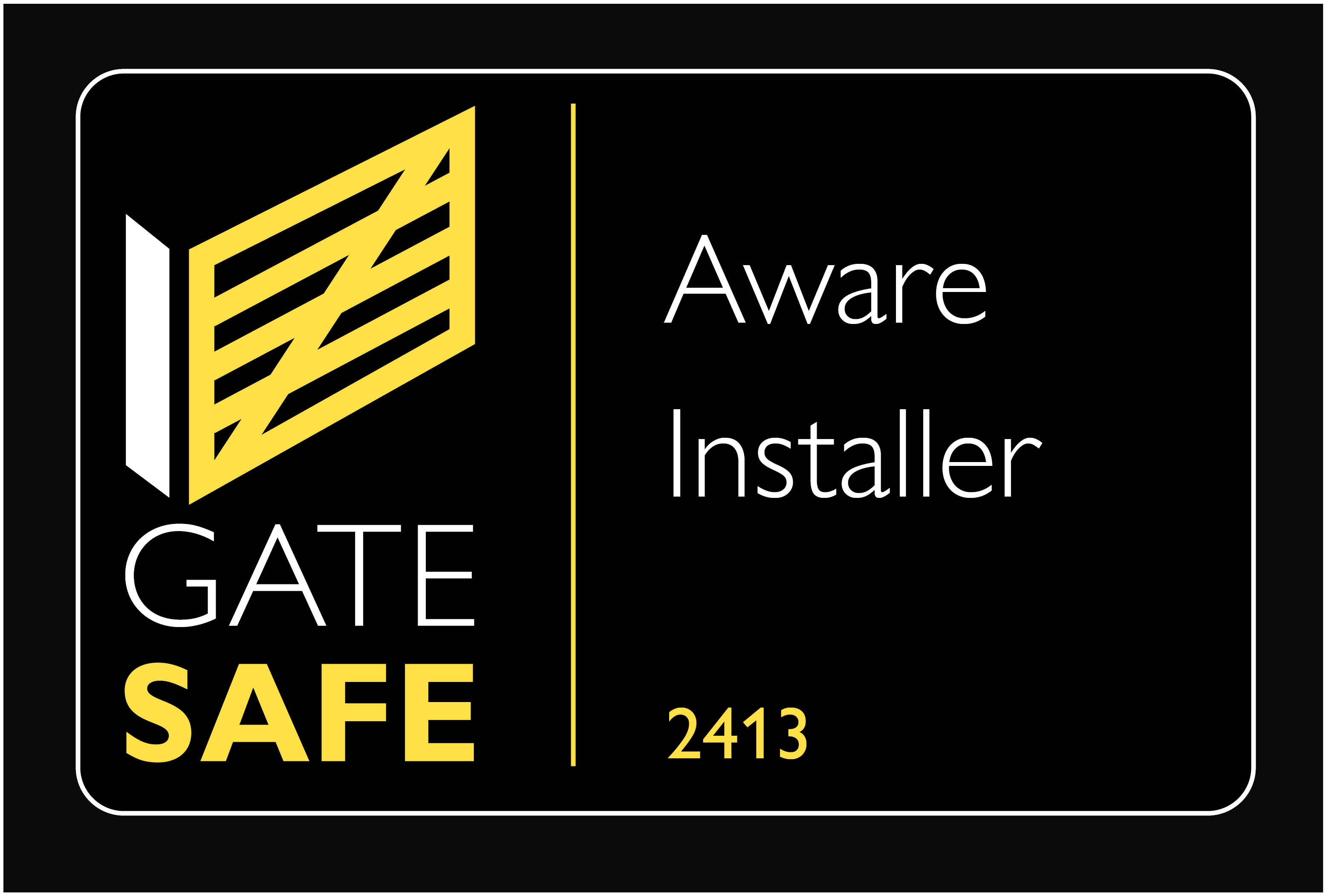What is Rapid Deployment Fencing, and Is It Right for Me?

For many years, the primary focus on construction sites has been creating basic temporary boundaries to separate danger from safety. This led to the development of temporary fencing, commonly referred to as 'Heras' style fencing. This type of fencing quickly became popular due to its mobility, stability, and fast deployment. In fact, it’s now widely used at medium and large-scale events, such as concerts, demonstrations, and crowd gatherings. Gone are the days of a temporary orange plastic fence with steel stakes!
Temporary fencing has traditionally been governed by BS 1722 part 18, which outlines the safe design and deployment of these systems to ensure public safety is prioritised. However, this emphasis on safety has often left a lingering question: “How can I quickly deploy a temporary fence while ensuring a higher level of security?” Unfortunately, the standard ‘Heras’ style panels don’t always answer this question.
The Emergence of the Problem
Over the past five years, there has been an increasing shift towards prioritising the security of investments on construction sites and at events. When we refer to ‘investment’, we mean anything from consumables, materials, and tools to the risks of vandalism or urban exploration. These security concerns come with financial implications, such as:
Consumable, Material, and Tool Theft: In 2023 alone, there were over 44,514 reported tool thefts in the UK, with a total value of around £98 million.
Vandalism and Urban Exploration: While difficult to quantify, vandalism on construction sites remains a major issue. According to the British Transport Police, an average of 3,000 cases of reported vandalism are recorded every week.
Given that temporary fencing has often been used as a deterrent for these issues, it’s understandable why the traditional panels we’ve always relied on can only delay an attack for so long.
Introducing the Rapid Deployment Solution
This is where Rapid Deployment Fencing steps in, offering a solution that fills the gap between static fencing and effective site defence. What was once a grey area of ‘what is Rapid Deployment?’ has now become much clearer. Rapid Deployment fencing is designed to provide security exactly where it’s needed, without compromising on flexibility or ease of use.
First Fence recognised the challenges faced by construction sites and event organisers and understood the critical need for balance. When it comes to security, the most effective approach is a multi-level strategy: Delay (fencing), Detection (Perimeter Intrusion Detection Systems), and Response (physical manpower). While detection and response systems are essential, they require considerable investment in equipment, time, and manpower. As a result, the need for an upgraded physical boundary solution became evident.
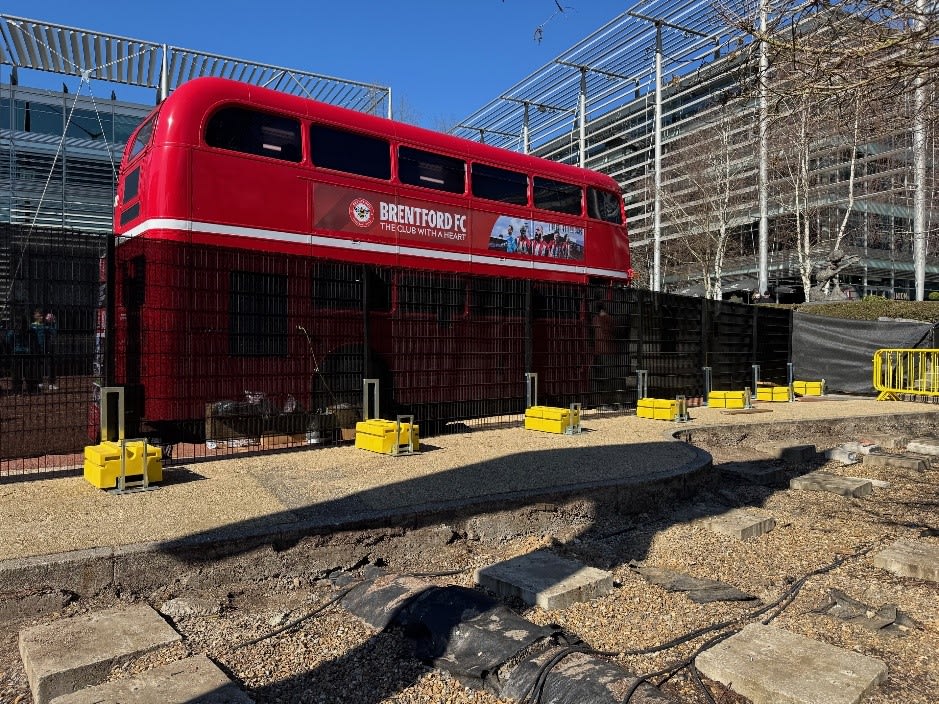
What is RapidShield®?
RapidShield® is the result of this thinking. Developed with security and ease of deployment in mind, RapidShield® goes beyond the typical temporary fence panel, which is usually 2 metres in height and 3.5 metres in width. Instead, it uses mesh infill sheets from permanent fence systems, offering a temporary solution with an option to extend the height up to 3 metres. The system also provides a variety of mesh infill types to suit different security needs.
One common issue with temporary fences is stability. While BS 1722 part 18 provides solutions like bracing and additional panels to secure the structure, these often require extra resources and space behind the fence. For example, deploying 200kg of concrete blocks behind each panel can require up to five metres of space, once you account for the turning radius of a telehandler.
The innovative RapidShield® system addresses this by incorporating DuraBlok, concrete blocks encased in a durable MDPE plastic casing, designed to be deployed by hand. These blocks, weighing 50kg each, can be stacked to create a secure base. The modular design allows for flexibility, as blocks can be added or removed depending on site requirements and the chosen mesh type.
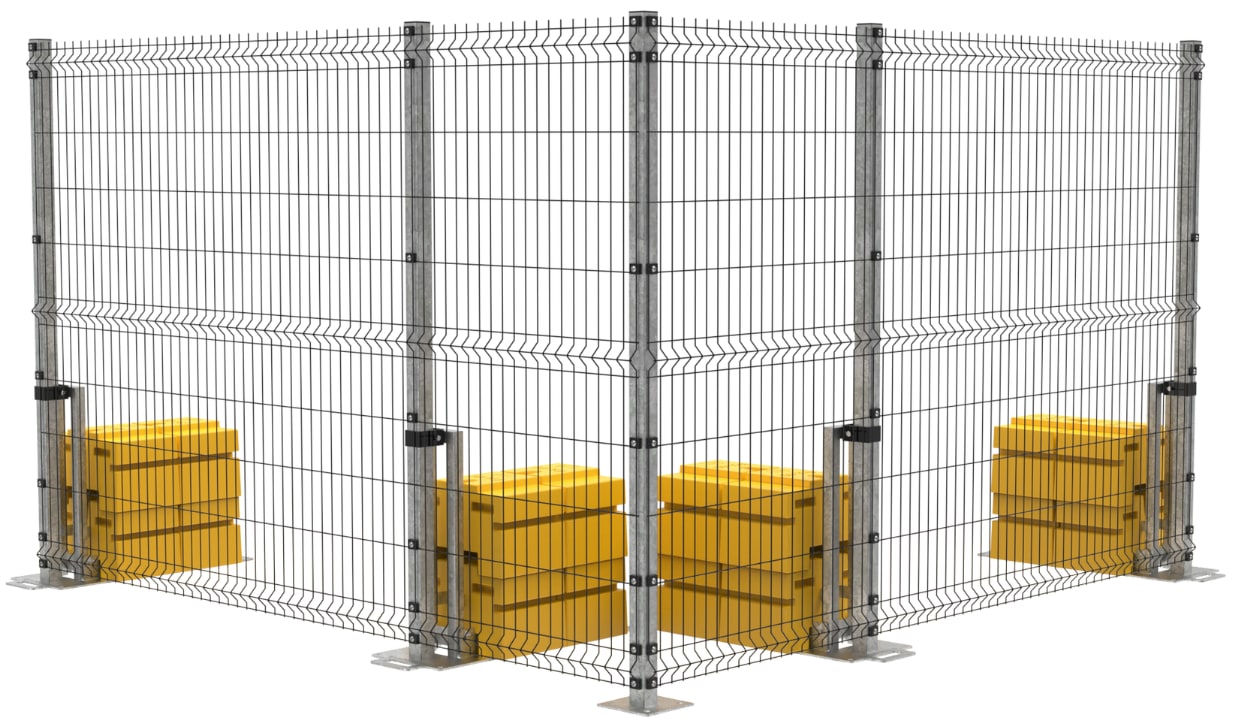
Understanding Infill Types
Choosing the right mesh for your Rapid Deployment system may seem complex, but it ultimately comes down to the security requirements of your site. Below are the key infill options:
V Mesh Fencing: The most cost-effective solution for RapidShield®, V Mesh is made from 4mm or 5mm welded wire, creating apertures of 200mm x 50mm. It features extra rigidity thanks to V-shaped ridges and includes 30mm oversail spikes at the top for additional deterrence. However, V Mesh may not be suitable for high crowd loading or where enhanced rigidity is required.
868 Mesh Fencing: Manufactured with two 8mm horizontal wires and a 6mm vertical wire, the 868 mesh panel is the strongest option for RapidShield®, providing superior rigidity. However, it is slightly heavier than V Mesh, meaning installation might take a little longer.
358 Mesh Fencing: Also known as ‘prison mesh’ or ‘anti-climb mesh’, this panel has 75mm x 12mm rectangular apertures, making it extremely difficult to scale. The solid construction of this mesh reduces airflow, which means wind resistance will be higher compared to more open mesh options. As a result, the standard 200kg DuraBlok base will offer better stability.
Setting Up the System
One of the key benefits of RapidShield® is its patent-pending folding design. The ease of moving the front and back frames into position, followed by a quick unfolding process, means the system can be set up in seconds.
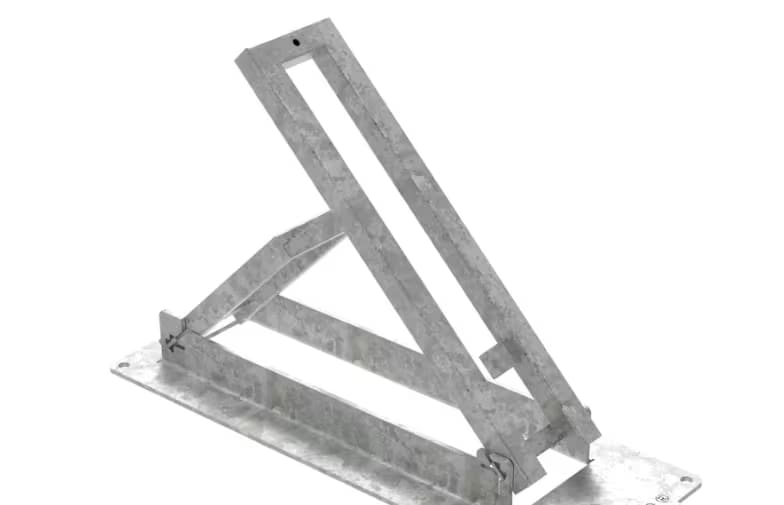
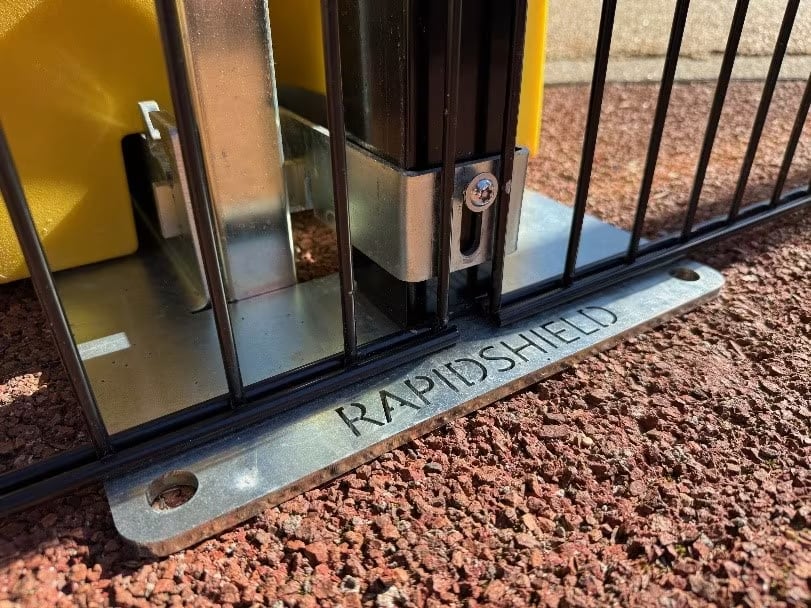
After the frames are deployed, simply space the feet according to the correct distances: 2.5m for 868 and 358 mesh, and 3.0m for V Mesh. Then, load the yellow blocks by hand, secure the posts to the base, and hang the mesh.
The mesh is attached using anti-tamper T40 Torx fixings, which prevent unauthorised tools from being used. Most permanent fence systems use one-way security fixings, making them difficult to remove. First Fence’s innovative T40 fixings are designed specifically to prevent easy removal and are secured using a specially designed bit.
When You’re Finished
Unlike other systems that use ballast to stabilise the fence, RapidShield®’s approach is much more straightforward. Durablok allows for quick removal and re-deployment, with no ballast to worry about. This means there are no concerns about storage or contamination issues, and your site remains clean and clear of debris.
Conclusion
Temporary fencing has its place for cost-effective, quick deployment. However, not every site wants the temporary look of traditional fencing, and many require a more permanent-looking solution, even temporarily. Rapid Deployment fencing provides enhanced security while maintaining an attractive appearance.
With detailed wind load calculations available for all three mesh types at various heights, First Fence is confident that we have the right solution for your site. If you'd like to discuss your specific requirements, get in touch with our friendly sales team today.
For more information on our Rapid Deployment Fencing, please contact our sales team on 01283 512 111.








